Id like to say uphill, both ways, but it only felt like that.
You dont know a damned thing about being cold, or hungry, or tired.
You sleep in a warm bed, you eat hot meals, and nobodys shot at you.
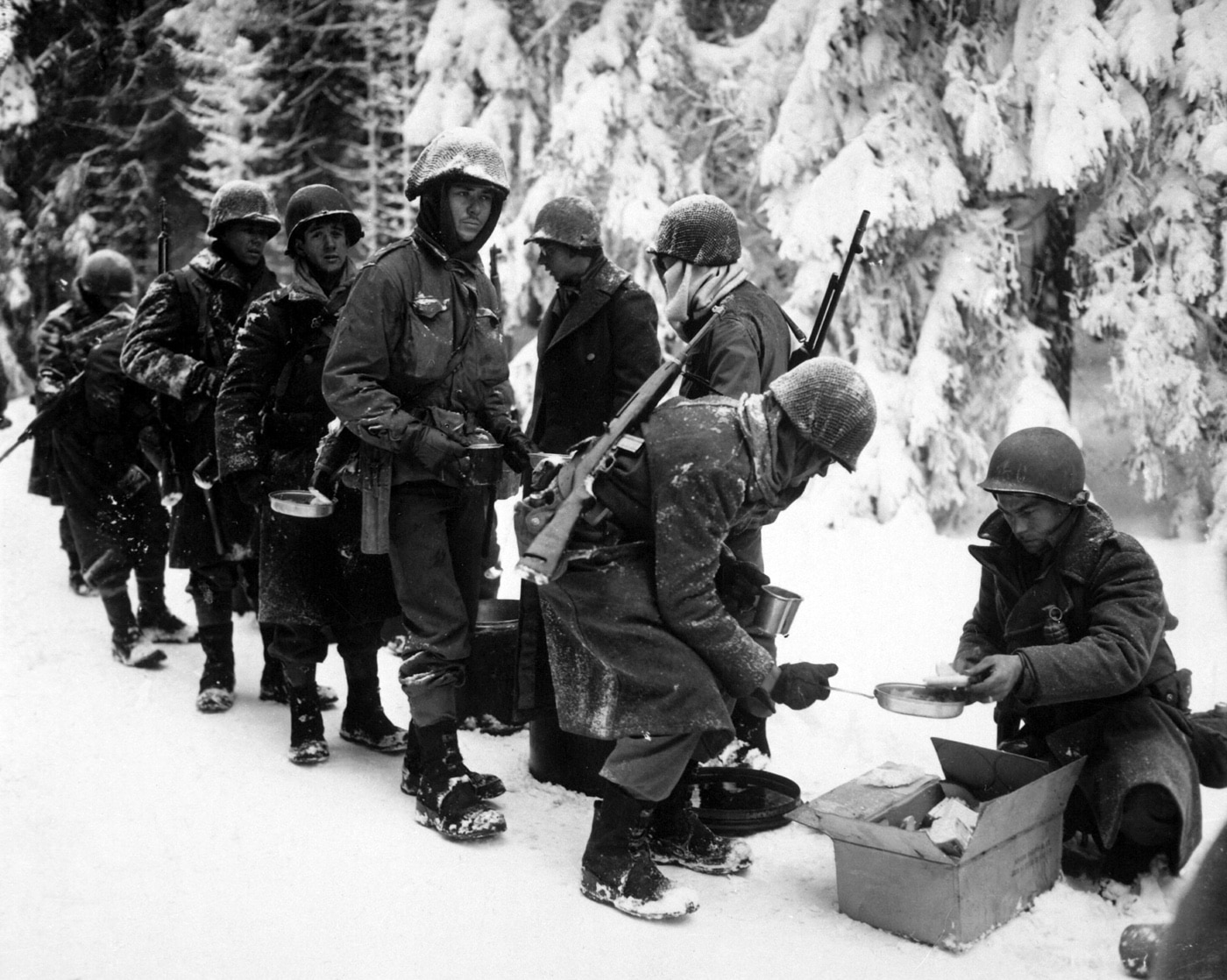
Men of the 87th Infantry Division get some hot chow. Their winter gear is varied, but most men wear the rubber/fabric “Arctic Boot”, officially called “Overshoe, Arctic, Cloth Top”. LaRoche, Belgium on January 1, 1945. Image: NARA
He was right, and I shut up about it.
But there were no easy days on the road to victory.
This is a fair and accurate assessment.
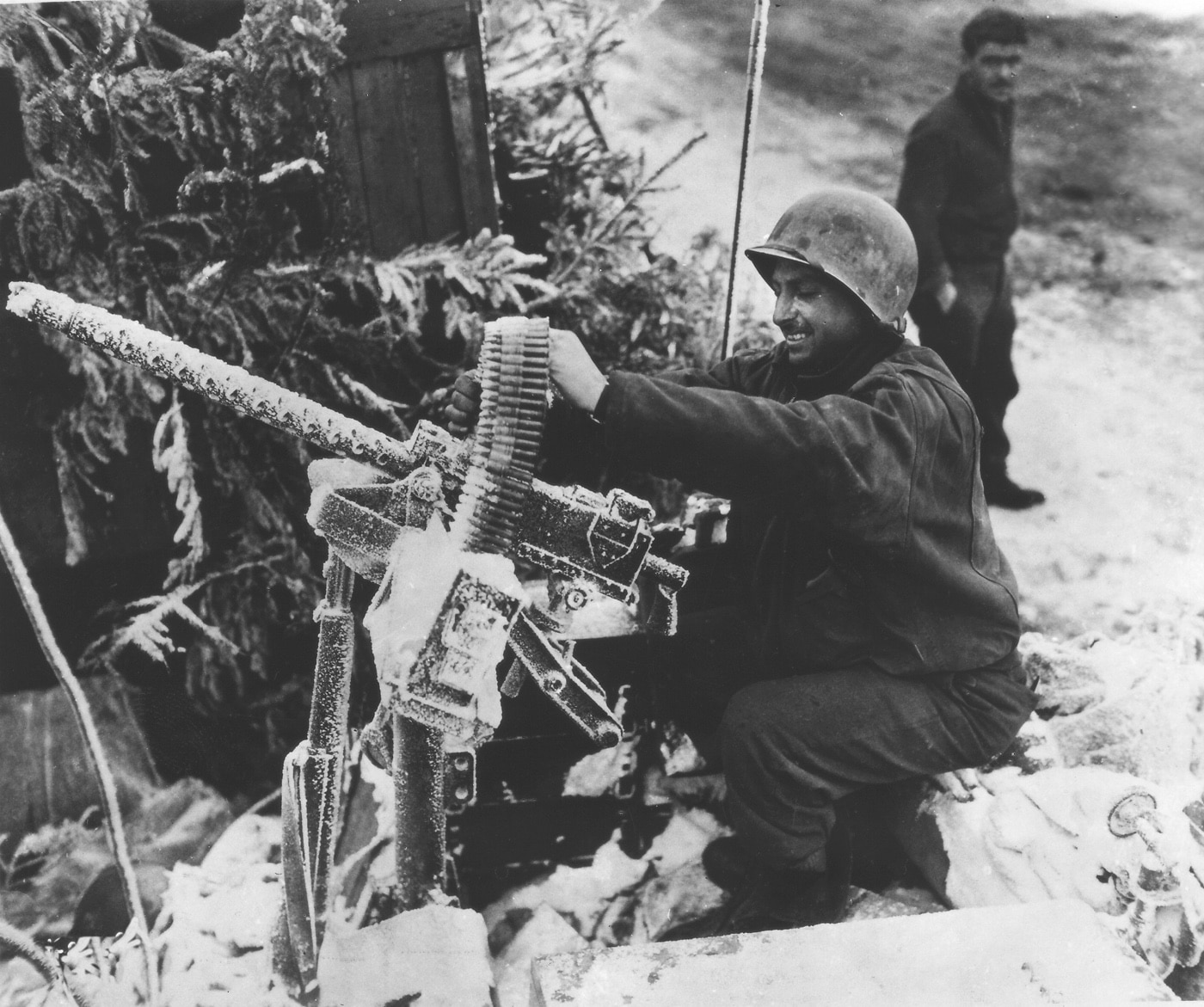
The snow and ice would freeze weapons shut. Here, a soldier with the 5th Armored Division readies a frost-covered Browning M1919A4 in Belgium during January of 1945. Image: NARA
Ultimately, American (and all Allied) supply organizations faced a wide range of challenges.
It should be replaced by the M-1943 field jacket and high-necked sweater.
This combination was not only warmer than the overcoat but lighter in weight.
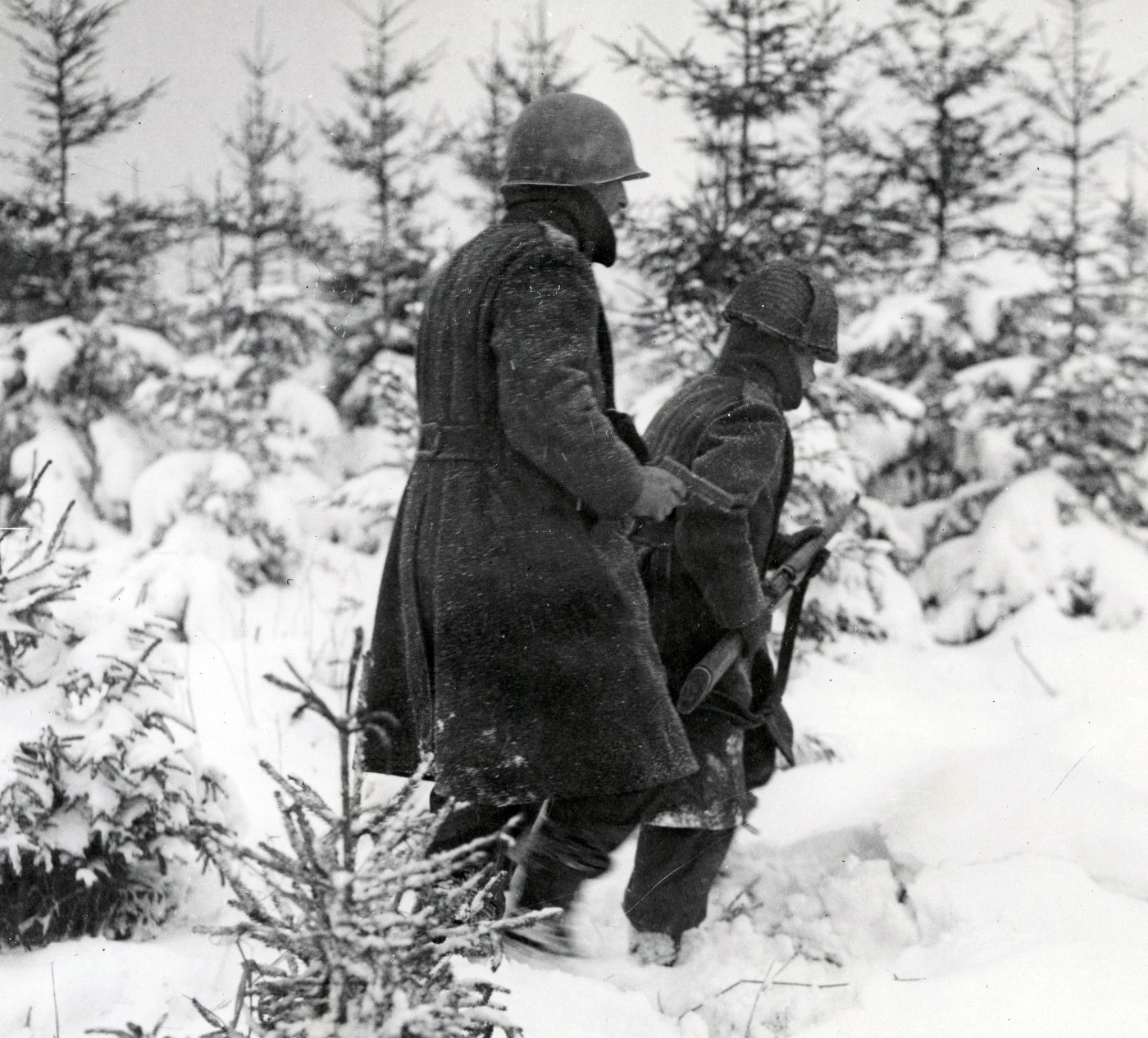
Men of the 82nd Airborne Division in Belgium during January 1945. The Melton wool overcoat was never intended for combat duty, but it was all many G.I.s had to stave off the cold. Image: NARA
The proposed uniform weighed 21 14 pounds.
If the jacket and sweater were used, the weight would be reduced to 18 12 pounds.
The Theater Commander subsequently agreed to accept the high-necked sweater.
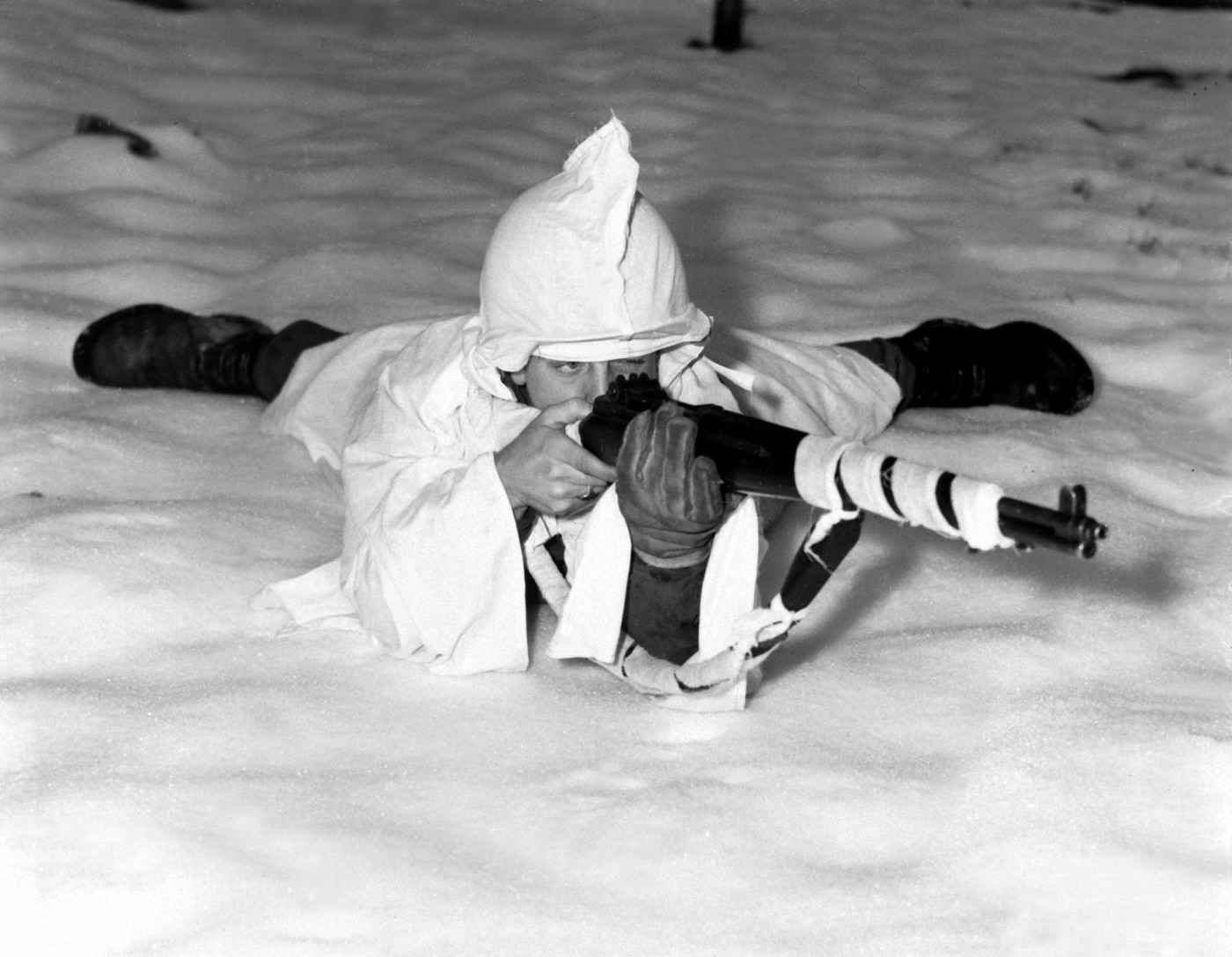
This American soldier shows off improvised snow camouflage for himself and his M1 rifle. Note the exposed shooting hand as few “shooting gloves” were available. Image: NARA
Distribution Problems
Cold weather came to northern Europe in the early fall of 1944.
Issues must be completed by 1 October if the fighting efficiency of the troops is to be maintained.
The Winterizing Program
The distribution of warm clothing to the armies began at once.
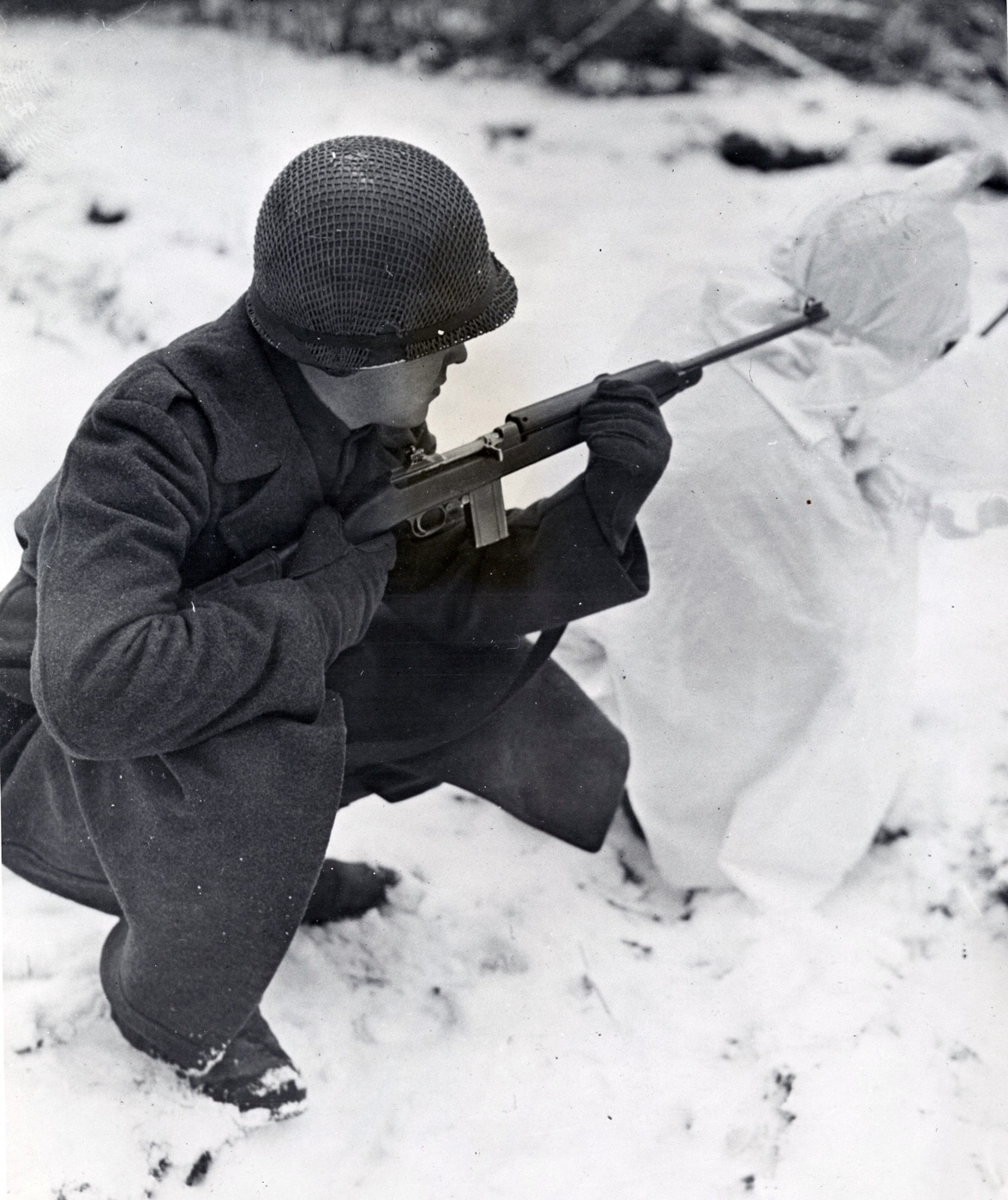
These two soldiers unintentionally demonstrated the stark difference between a snow cape and the standard OD green uniform. Image: NARA
On 13 October, the Chief Quartermaster announced that the so-called winterizing program was completed.
The War Department expected a pair of socks to last about four months under normal combat conditions.
Experience on the Continent proved they wore out in about 15 days.
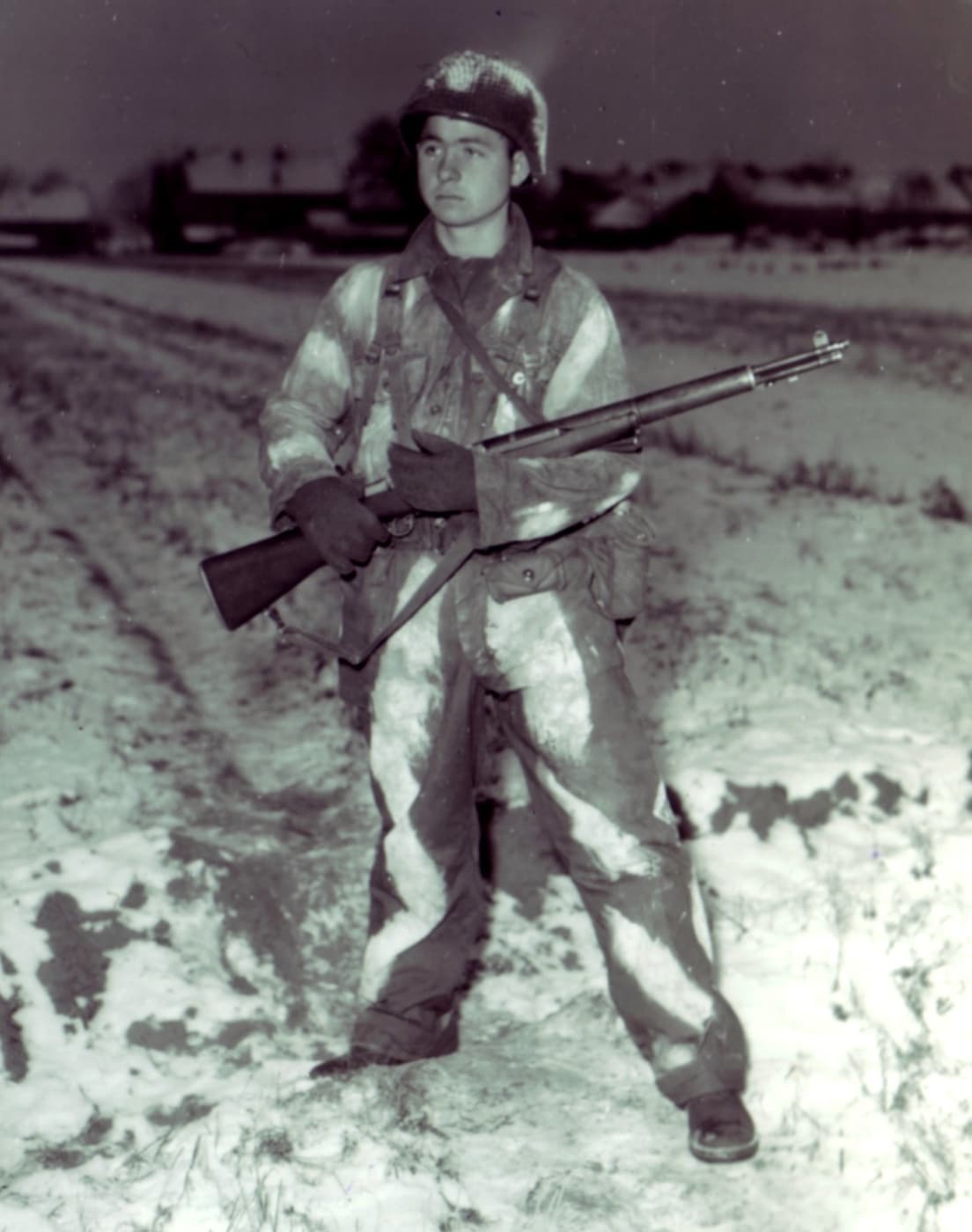
When liberated bed sheets were unavailable, white paint was used. A young infantry scout displays his camo-painted overalls. Image: NARA
Woolen undershirts that had been expected to last six months wore out in four and half months.
Overcoats expected to last 18 months had to be replaced in nine months.
Warm uniforms of all kinds were being improvised.
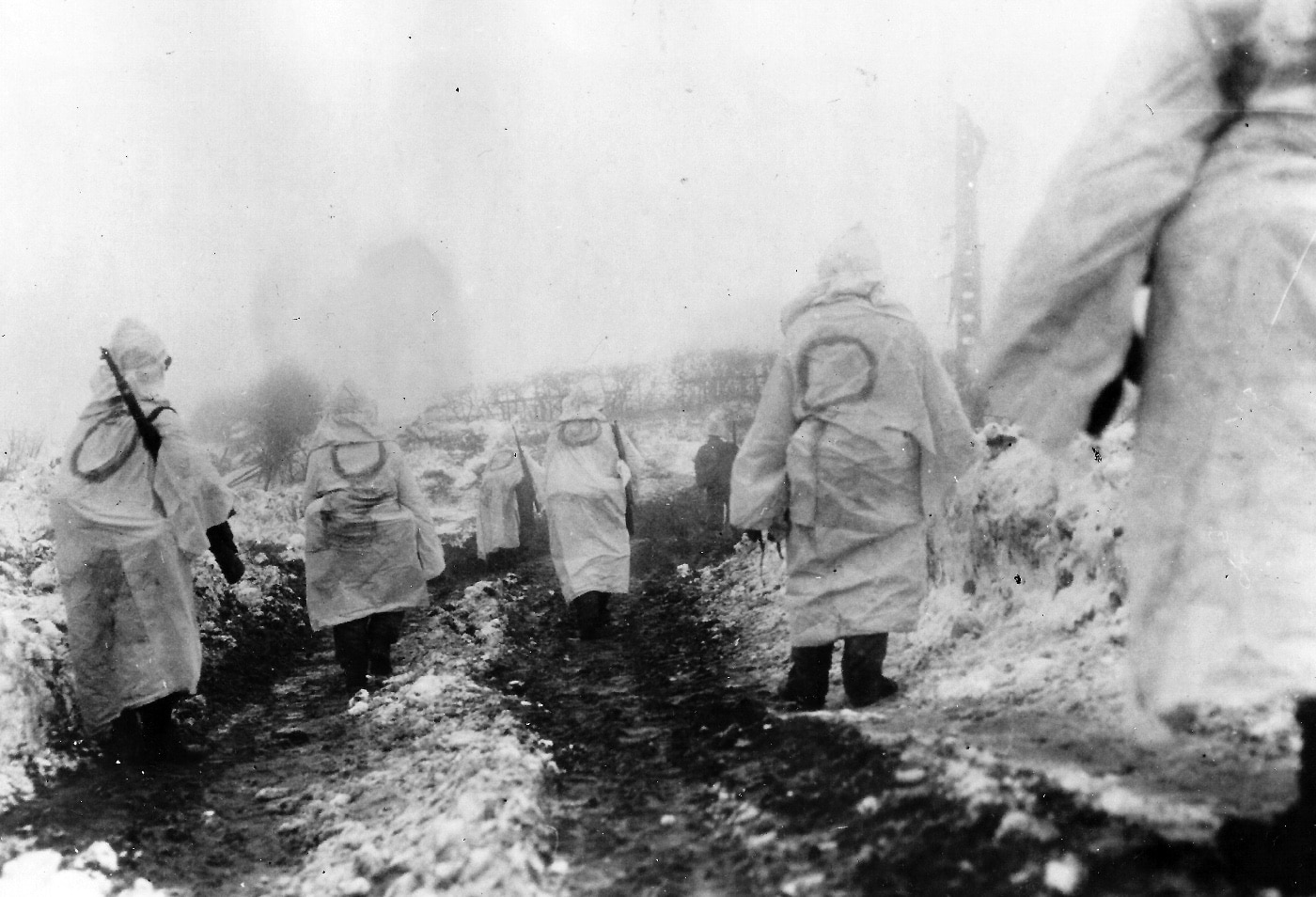
Men of the 2nd Infantry Division wear orange identity circles on the backs of the snow capes. The photo was taken near Krinkel, Belgium in January 1945. Image: NARA
Artillery units were wearing the same woolen uniform and an outer layer of herringbone twill.
Trigger Mittens
A limited distribution of trigger-finger mittens was made in January 1945.
Troops of the 17th Airborne Division were pleased with the item.
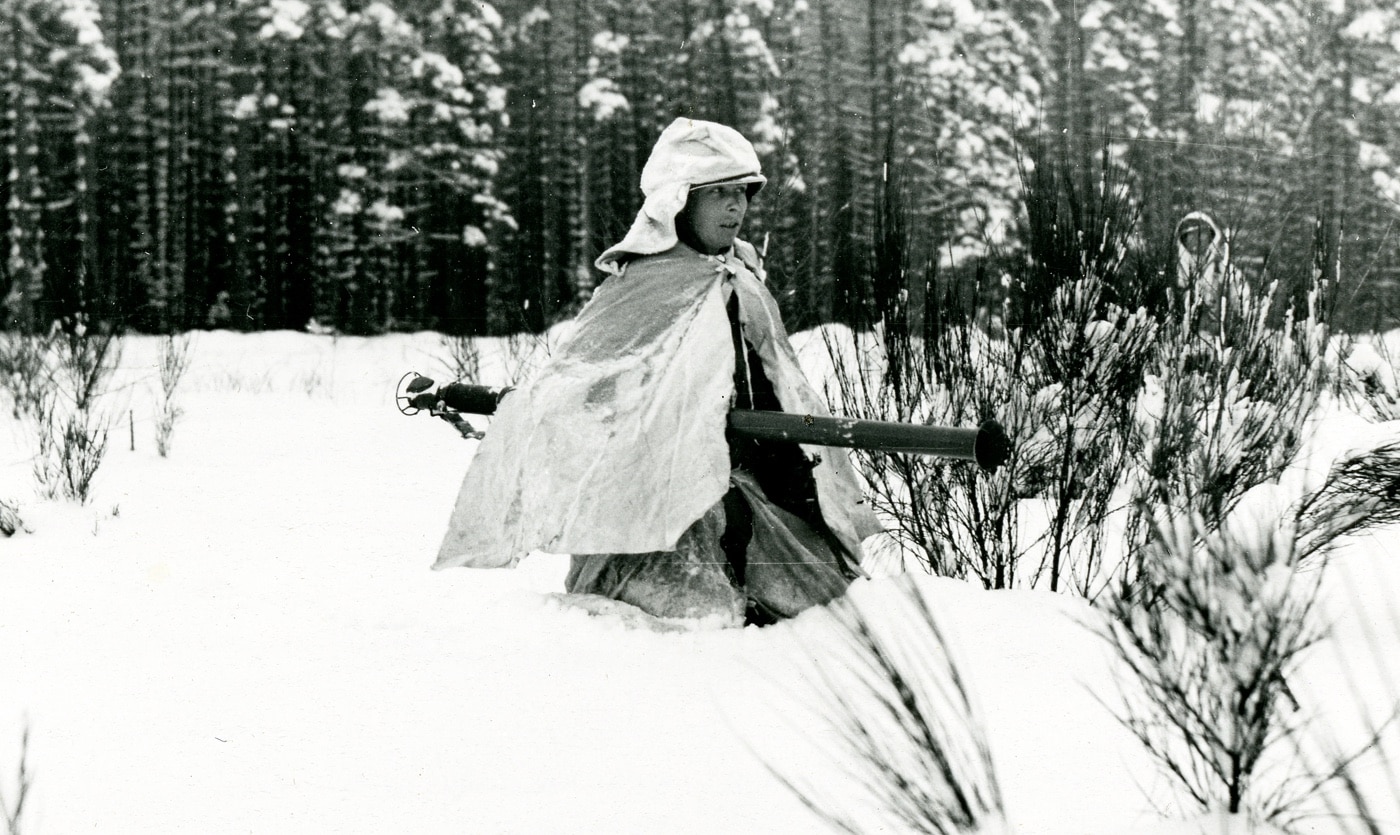
An airbornebazooka manwears several layers of snow capes — and ultimately blends in well with the frozen landscape. Image: NARA
The division quartermaster believed the mitten should be an essential part of the winter combat uniform.
Even though it cut down the full use of the fingers, its warmth and protection were sufficient compensation.
The American soldiers desire for a snug, well-fitting shoe was a national characteristic.
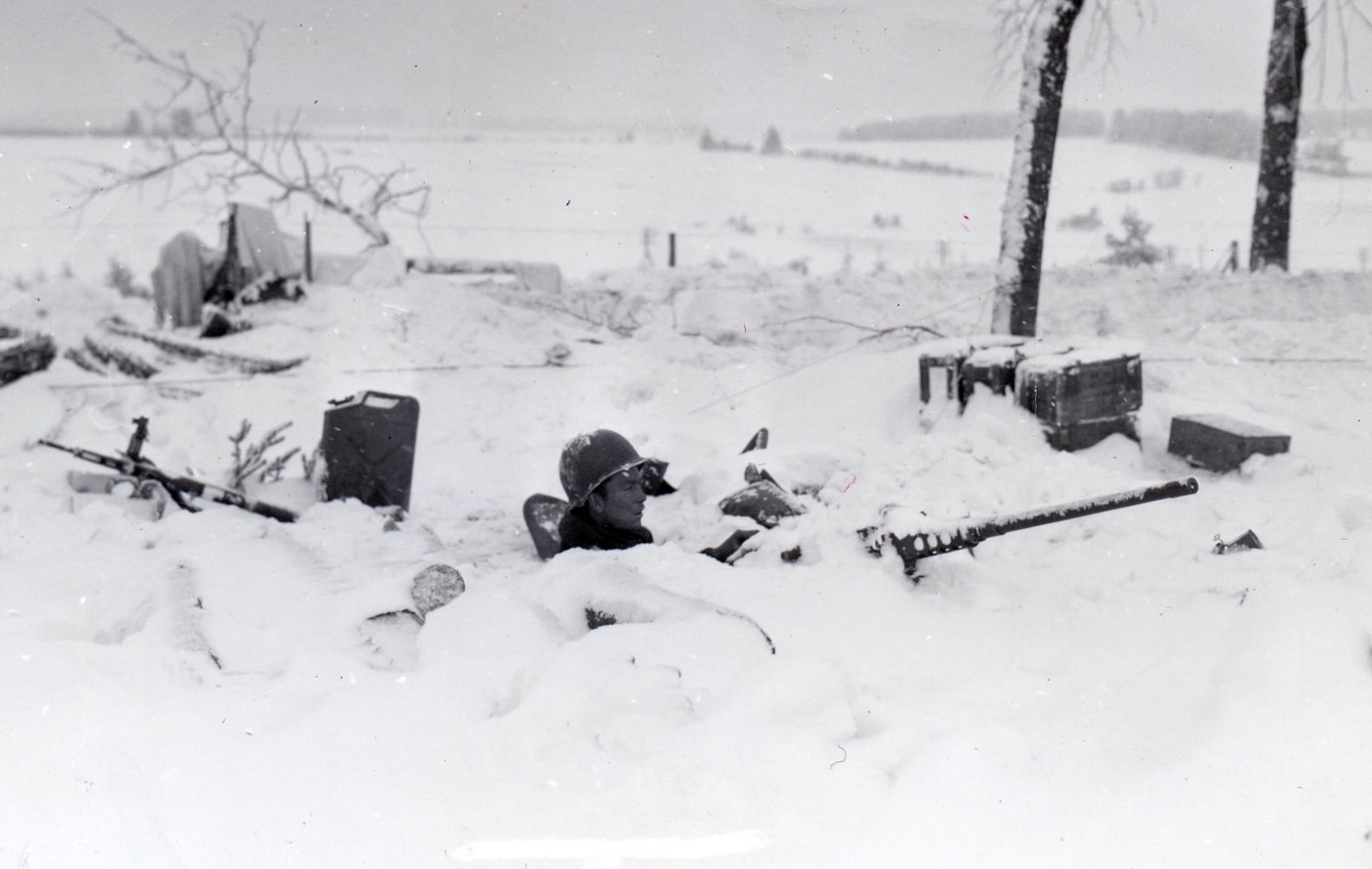
Shown here is a soldier of the 1st Infantry Division manning aBrowning M2 .50 caliber AA machine gun. While it looks like good camouflage, the gun position is completely filled with snow. Image: NARA
Complaints grew louder as increased numbers of combat boots reached the front lines.
The boots leaked and were cold, even after constant dubbing.
Troops provided with flesh-side-out service shoes made the same complaint.
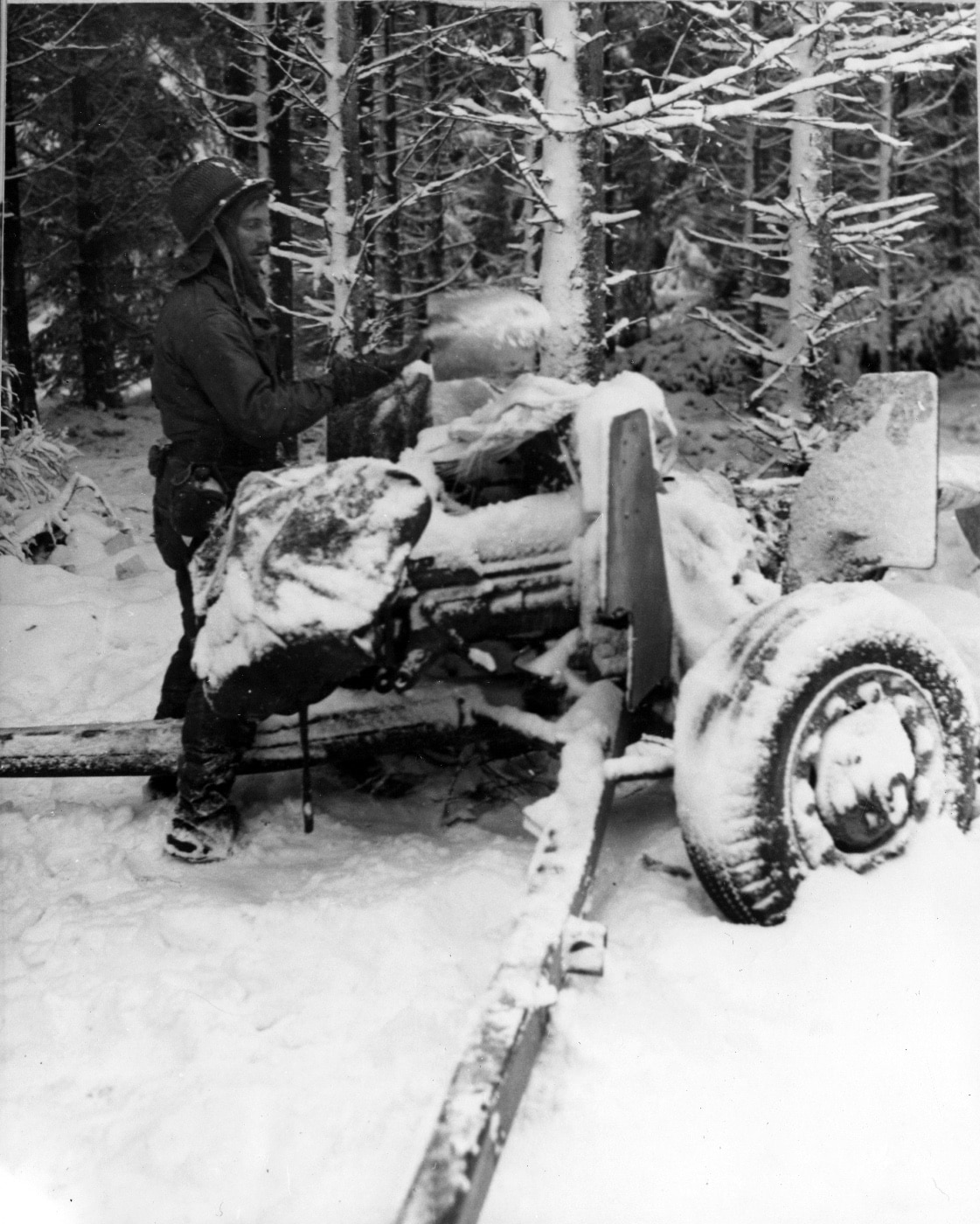
Shoveling out a 57mm AT gun at Courtil, Belgium on January 21, 1945. Note the canvas cover intended to keep the frost out of the breech. Image: NARA
Though smooth-surfaced leather was preferred, all troops wanted the combat boot because it did away with leggings.
It is similar to frostbite, which is because of exposure in below-freezing temperatures.
Trench foot emerged among the combat forces like a contagious disease.
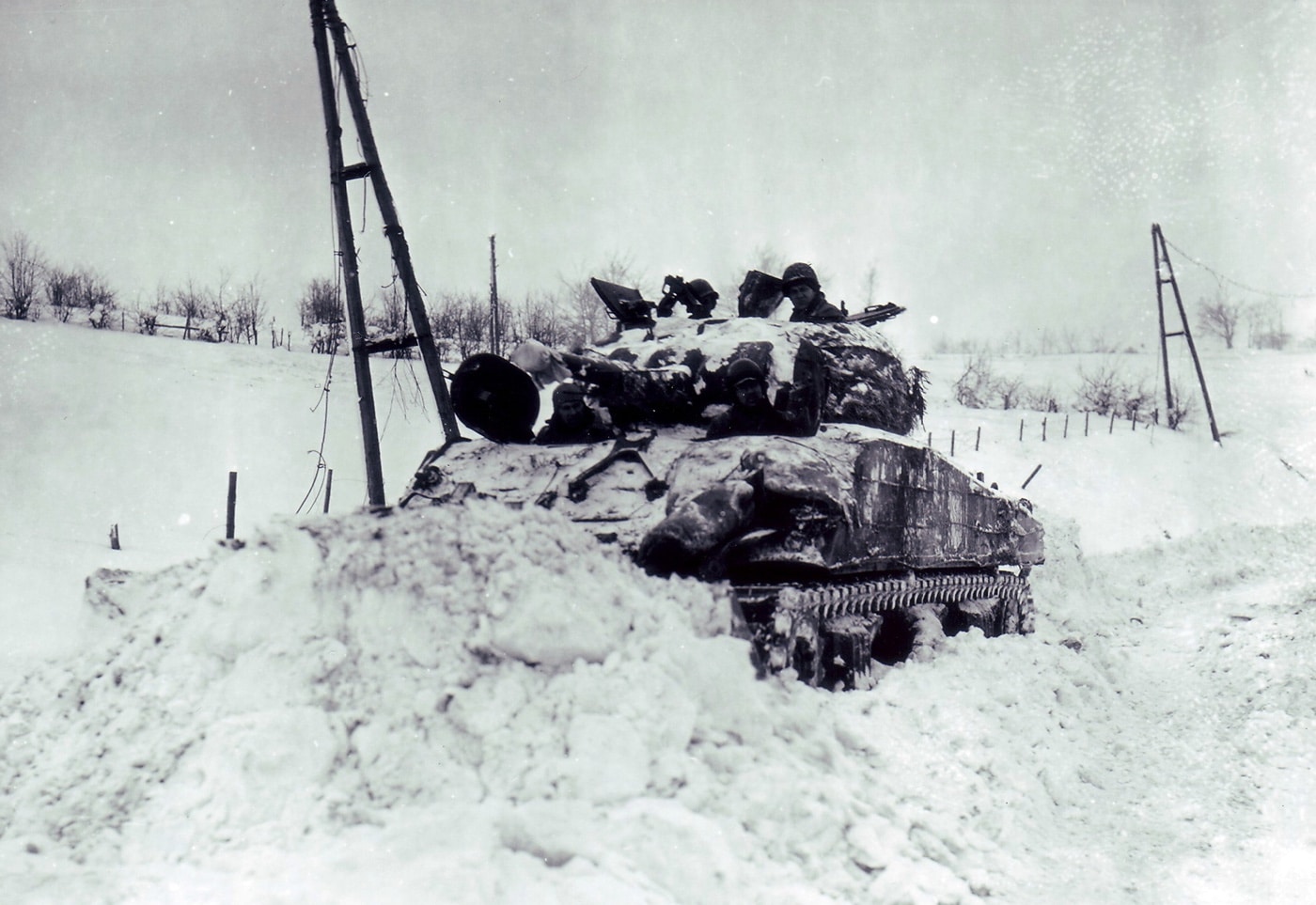
A Sherman works as a snowplow clearing roads outside of Muringen, Belgium during January 1945. Image: NARA
The first wave began in November and lasted until the second week in December.
The second wave began during the German counterattack in the Ardennes.
The third, which was really a wave of frostbite, broke out early in January 1945.
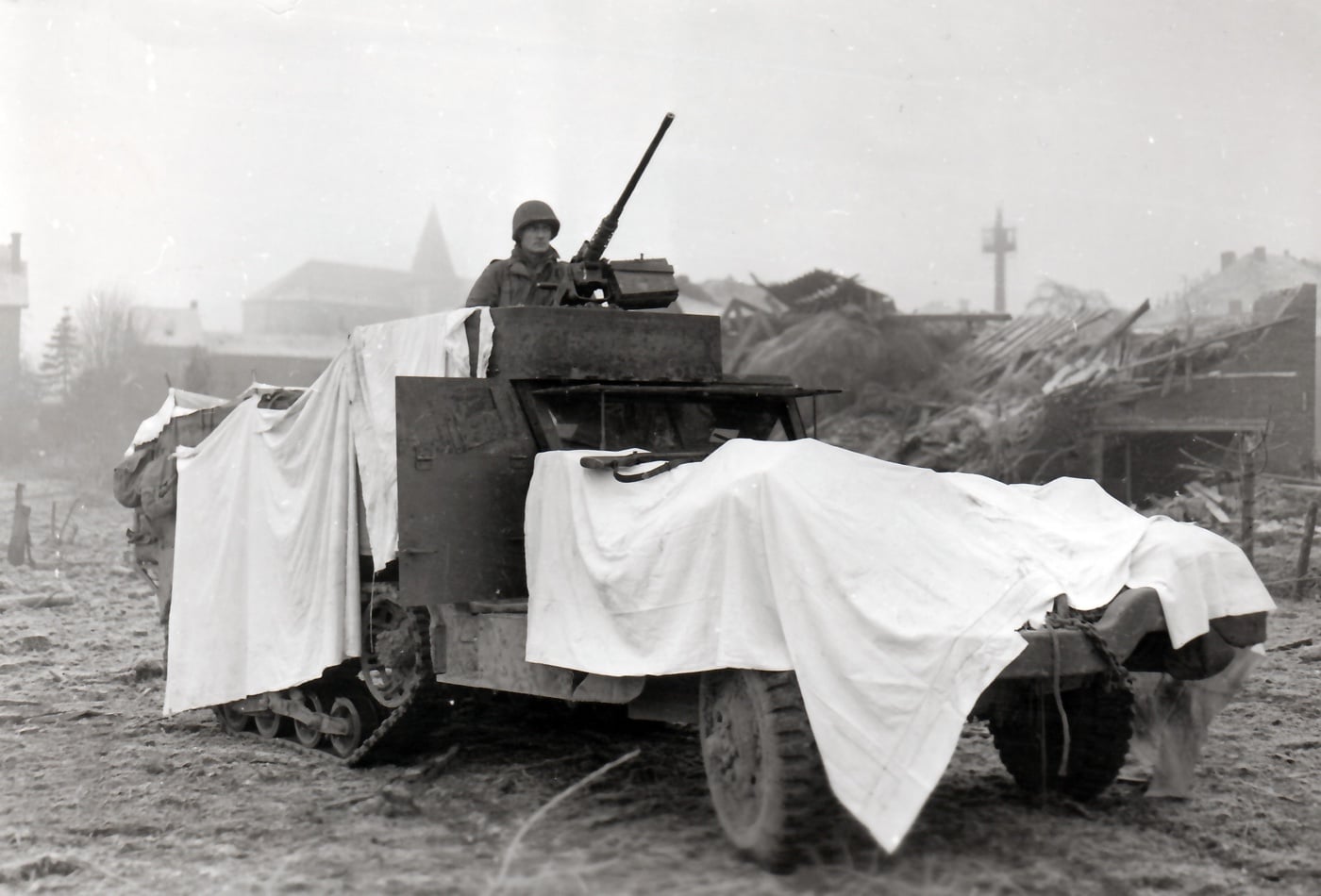
Bedsheets often provided the simplest snow camouflage. Here a M5 halftrack is scantily clad in white sheets. Image: NARA
Large-size boots and shoes could not be delivered immediately.
Heavy woolen and ski socks were available only in limited numbers during the trench foot season.
Troops were instructed to change their socks daily.
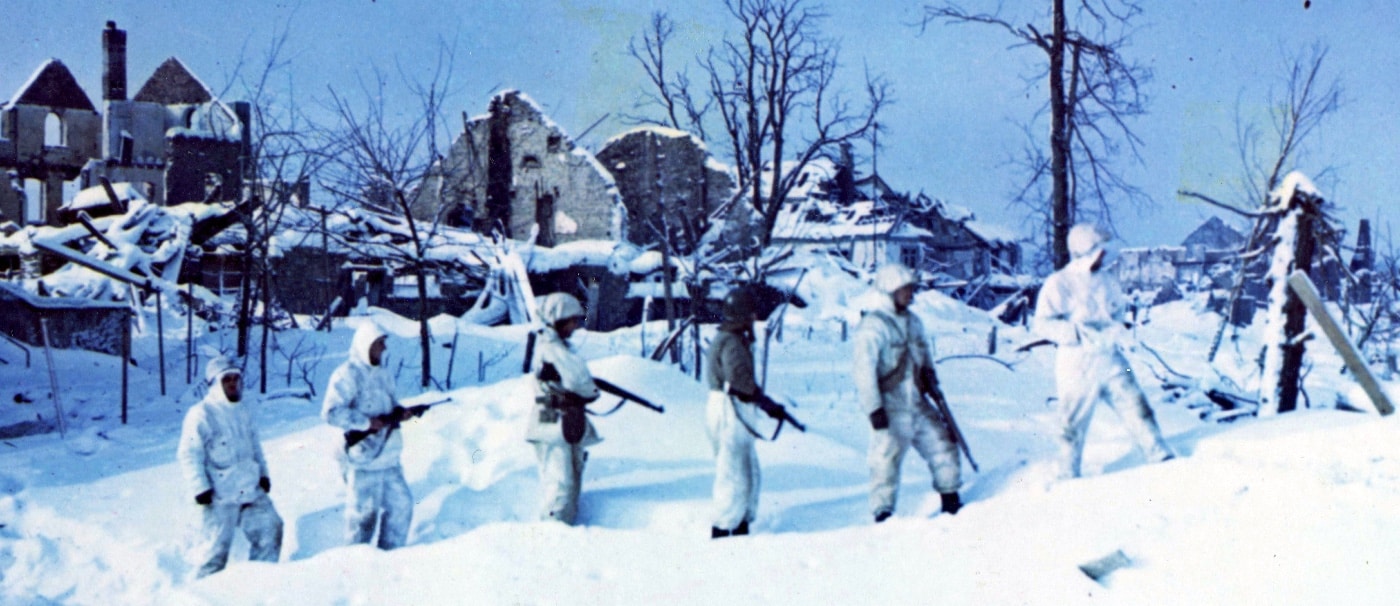
Soldiers of the 7th Armored Division on patrol during late January 1945. They are wearing snowsuits that help to conceal them. Image: NARA
Yet socks could not be dried overnight, and a change of socks could not be provided.
Some troops discarded boots or shoes and instead put several thicknesses of blanket padding inside their overshoes.
Shoepacs, although not entirely satisfactory, were the best footgear provided in the European Theater.
Sufficient amounts, however, were never available to equip all combat troops.
The wool issue glove is not sufficient protection on very cold days, nor will it stand much wear.
Until something better is designed, this suit should be the winter uniform for front line units.
Improvisations
Yank Magazine, March 2, 1945, edition.
In an article by Sgt.
Frozen weapons were one of the most dangerous effects of the winter warfare in the Ardennes.
Automatic weapons were the chief concern, although some trouble was experienced with M1 rifles and carbines.
The M1s were okay if we kept them clean and dry, said Tech.
Albert Runge, a platoon sergeant from Boston, Mass.
But you could usually work it out quickly by pulling the bolt back and forth a few times.
Sometimes the carbines got stiff and wouldnt feed right, but you could always work that out, too.
The BARs gave us the most trouble, Runge said.
They froze up easily when not in use.
Some other outfits reported that the lubricants in their light machine guns and anti-tank guns froze.
Heat tablets were ignited to thaw out the machine guns, which couldnt be cocked.
But blow torches were needed before the anti-tank guns were put back into firing condition.
During the fighting at Petit Langlier, Pvt.
Joseph Hampton found himself in a spot where he had no time to fool around with the above methods.
With no time to waste, Hampton thought and acted fast.
He urinated into the chamber, providing sufficient heat to thaw it out.
Not five minutes later, he killed a German with his now well-functioning rifle.
Hamptons company commander vouches for that story.
heat rations (fuel tablets) in their foxholes, McQuinn said.
Others used waxed K-ration boxes, which burn with very little smoke but a good flame.
heat and K-ration boxes are also fine for drying your socks or gloves.
I also used straw inside my overshoes to keep my feet warm while we were marching.
Some of our other men used newspapers or wrapped their feet with strips of blankets or old cloth.
McQuinns company commander, Capt.
Robert F. Windsor, had another angle on keeping feet warm.
We found our feet stayed warmer if we didnt wear leggings, Capt.
Thats true also of cloth overshoes, which are tight fitting.
When snug-fitting overshoes get wet and freeze, they bind your legs.
It looks to me like overshoes should be issued two or three sizes larger than shoes to prevent that.
Another must in this kind of weather, Capt.
Windsor continued, is to have the men remove their overshoes at night when its possible.
Otherwise, these cloth arctics sweat inside, and that makes the feet cold.
The drying tent to which Capt.
stove inside to provide heat.
This procedure takes from 45 minutes to two hours, depending on how wet the mens clothes are.
All the front-line outfits in the 83rdDivision used this method.
Web equipment was a problem.
gloves also proved unsatisfactory for winter fighting, 83rdDivision men reported.
When wet, they froze up and prevented the free movement of the fingers.
When their gloves wore out, many of the men used spare pairs of socks as substitutes.
The Bitter Winter
This has been a hard winter for much of America.




